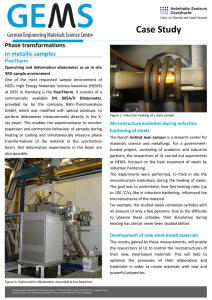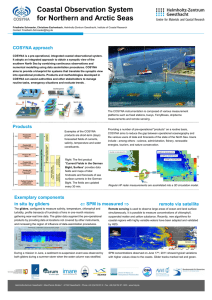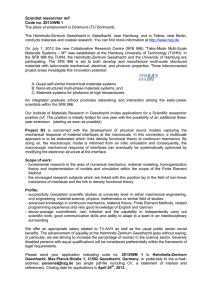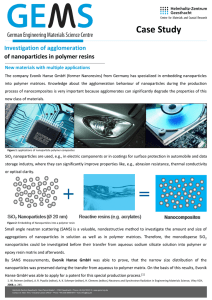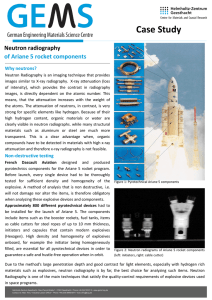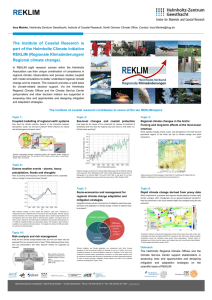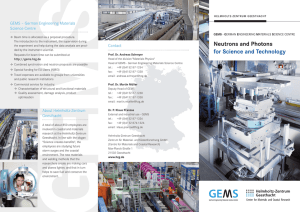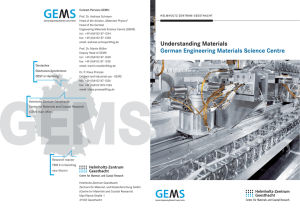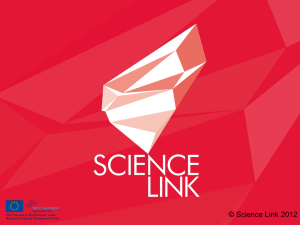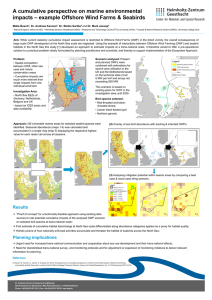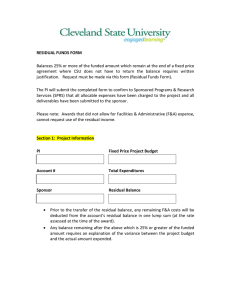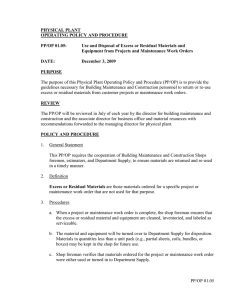Case Study Investigation of residual stresses in new aluminium alloys
advertisement
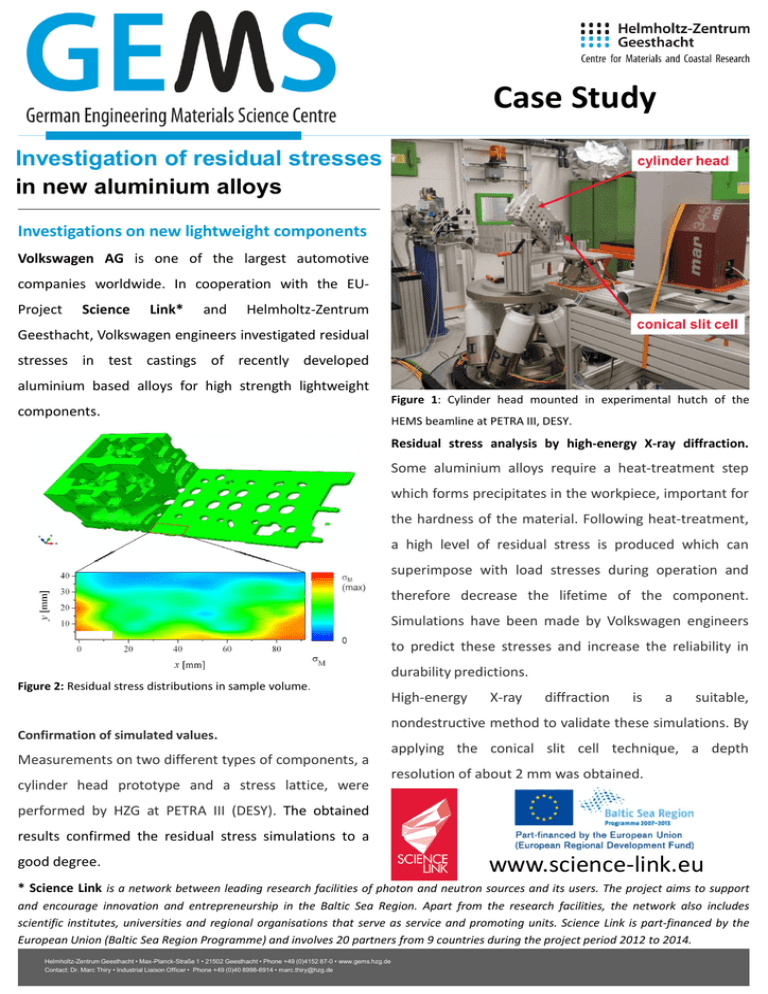
Case Study Investigation of residual stresses in new aluminium alloys Investigations on new lightweight components Volkswagen AG is one of the largest automotive companies worldwide. In cooperation with the EUProject Science Link* and Helmholtz-Zentrum Geesthacht, Volkswagen engineers investigated residual stresses in test castings of recently developed aluminium based alloys for high strength lightweight components. Figure 1: Cylinder head mounted in experimental hutch of the HEMS beamline at PETRA III, DESY. Residual stress analysis by high-energy X-ray diffraction. Some aluminium alloys require a heat-treatment step which forms precipitates in the workpiece, important for the hardness of the material. Following heat-treatment, a high level of residual stress is produced which can superimpose with load stresses during operation and therefore decrease the lifetime of the component. Simulations have been made by Volkswagen engineers to predict these stresses and increase the reliability in durability predictions. Figure 2: Residual stress distributions in sample volume. Confirmation of simulated values. Measurements on two different types of components, a cylinder head prototype and a stress lattice, were High-energy X-ray diffraction is a suitable, nondestructive method to validate these simulations. By applying the conical slit cell technique, a depth resolution of about 2 mm was obtained. performed by HZG at PETRA III (DESY). The obtained results confirmed the residual stress simulations to a good degree. www.science-link.eu * Science Link is a network between leading research facilities of photon and neutron sources and its users. The project aims to support and encourage innovation and entrepreneurship in the Baltic Sea Region. Apart from the research facilities, the network also includes scientific institutes, universities and regional organisations that serve as service and promoting units. Science Link is part-financed by the European Union (Baltic Sea Region Programme) and involves 20 partners from 9 countries during the project period 2012 to 2014. Helmholtz-Zentrum Geesthacht • Max-Planck-Straße 1 • 21502 Geesthacht • Phone +49 (0)4152 87-0 • www.gems.hzg.de Contact: Dr. Marc Thiry • Industrial Liaison Officer • Phone +49 (0)40 8998-6914 • marc.thiry@hzg.de Solving materials problems With X-rays or neutrons The German Engineering Materials Science Centre (GEMS) is a central user access platform, where the Helmholtz-Zentrum Geesthacht provides a worldwide unique infrastructure for complementary research with photons and neutrons. Instruments using synchrotron radiation are operated at the outstation at DESY in Hamburg, instruments using neutrons are located at the outstation at the FRM II Garching, near Munich. Figure 3: PETRA III experimental hall at DESY, Hamburg Figure 4: Experimental hall at FRM II in Garching, near Munich GEMS provides you with state of the art Industry specific user support: materials analysis well beyond the capabilities Materials science support labs of standard laboratory equipment: 3-D imaging (radiography, tomography) Residual stress measurements Analysis of phase transformations Characterisation of nanostructured hard and soft matter samples (sample preparation and characterisation) data analysis, secrecy agreements In situ sample Environments: • Furnaces • Cooling devices • Stress rigs • Dilatometer • Laser and friction stir welding devices Helmholtz-Zentrum Geesthacht • Max-Planck-Straße 1 • 21502 Geesthacht • Phone +49 (0)4152 87-0 • www.gems.hzg.de Contact: Dr. Marc Thiry • Industrial Liaison Officer • Phone +49 (0)40 8998-6914 • marc.thiry@hzg.de
